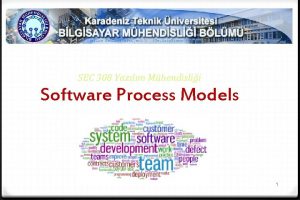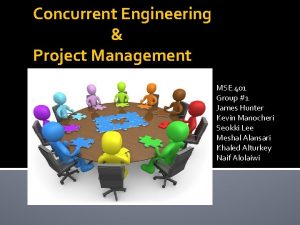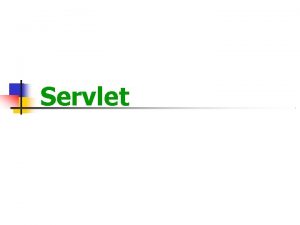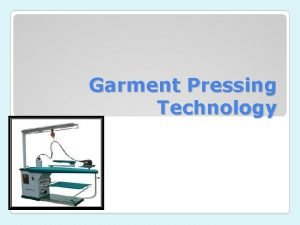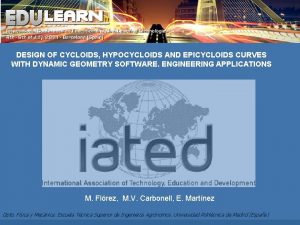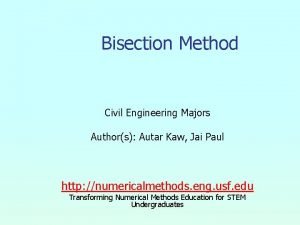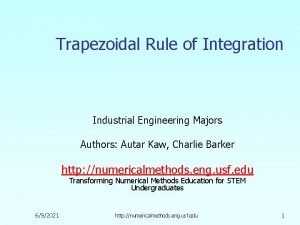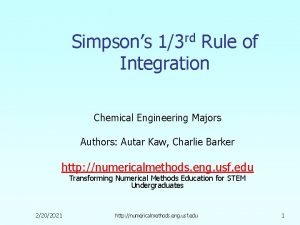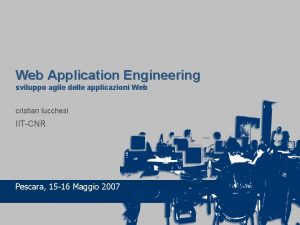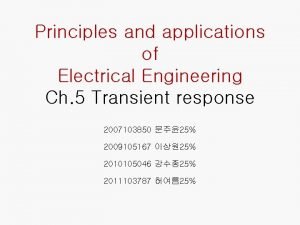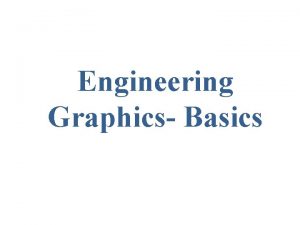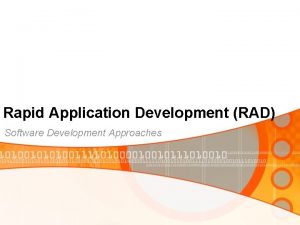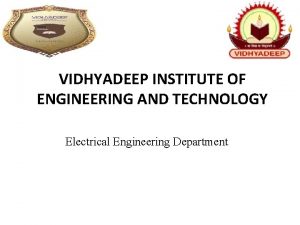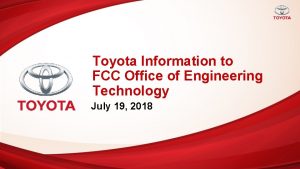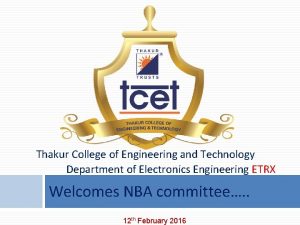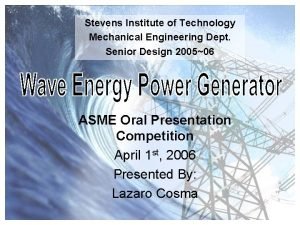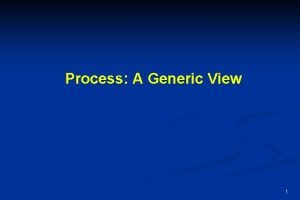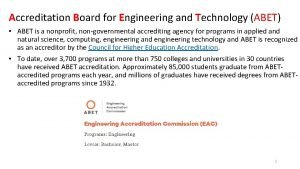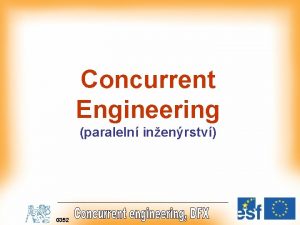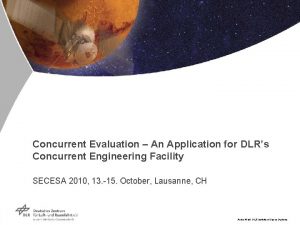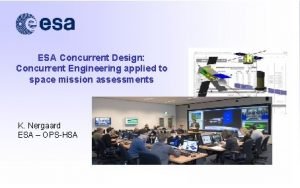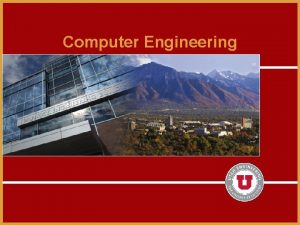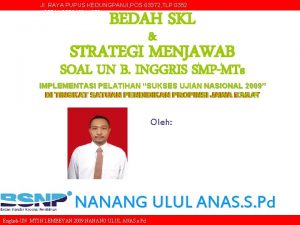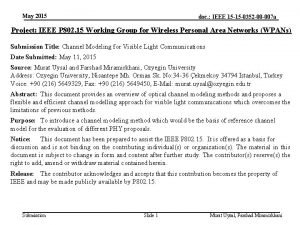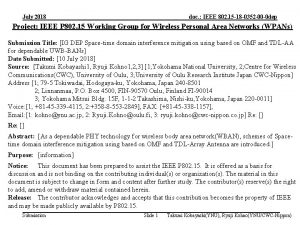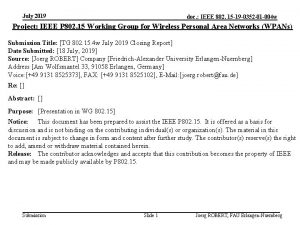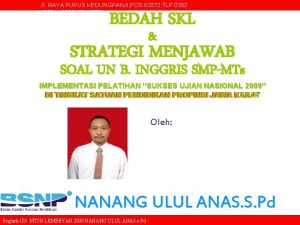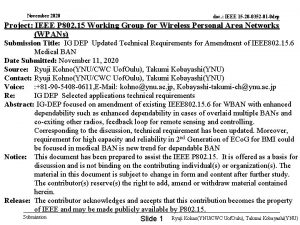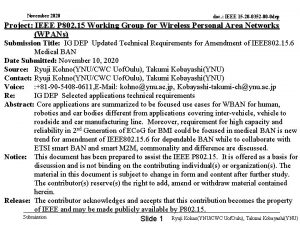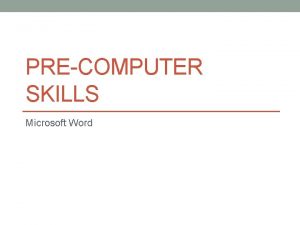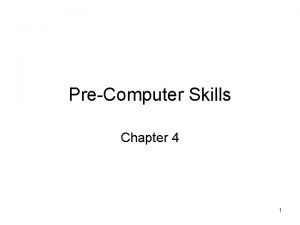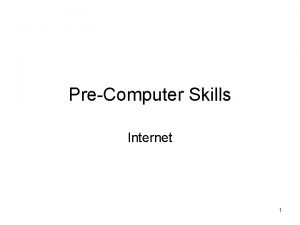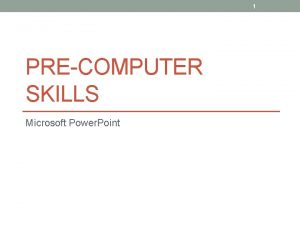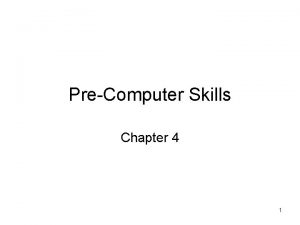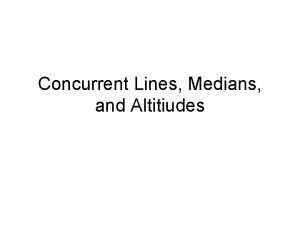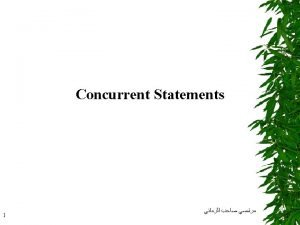Concurrent Engineering 0352 Application of computer technology Precomputer























- Slides: 23

Concurrent Engineering 0352

Application of computer technology Pre-computer phase Design problems: Computer phase Solution of design problem Time at the beginning, it is not clear how to attain the requirements - Proposed problem: How to realise the idea technical object process. - Production problem: Processing of material and creation of an object with prescribed functions. - Diagnosis problem: Monitoring of the quality of the object at the time of preparation. - Liquidation problem: Already at the time of production, it is essential to consider liquidation, optionally, recycling of the product after end of life. 0352

Phases of the computerised solution of the design problem - Computerised phase - prehistoric - introduction of computers in the solution of technical tasks; - numerically controlled machines and DNC machines in production. - Computerised phase - historic - introduction of mini-computers in industry; - application of the end element method in the dimensioning of the design. - Current phase - full-featured design of the technical object as a 3 D object; - design of the object with regard to future functionality; - virtual prototyping. - Future phase - increase in computer performance, artificial intelligence, virtual reality. 0352

Structure and character of classic engineering Classic progress of product design runs according to the scheme: 1) 2) 3) 4) 5) 6) Technical object design draft Verification of the draft Technological preparation of production Planning of capacity Testing of quality Decision concerning series production 0352

Structure of concurrent engineering - co-ordinated, systemic and team approach to innovation of engineering products; - performance of related activities concurrently by a team of designers under the guidance of the project coordinator; - the full knowledge management process is fully supported by information and computer technologies; - one of the methods for attaining changes in corporate processes in the area of the designed process with production processes within reach. 0352

Tools of Concurrent Engineering - QFD (Quality Function Deployment) - DFA (Design for Assembly) - DFM (Design for Manufacturing) - DFE (Design for Environment) - FMEA (Failure Mode and Effect Analysis) 0352

numerical production procedures, content chain of CAD design, CAM production programming, CNC machining and CAQ measurement short production time high production quality fundamental services for change management of the product and its repairs after wear in series production 0352

- For concurrent performance of consequential activities, it is essential to ensure easy projection of the results of subsequent activities in preceding activities. - To this purpose, an object model of the product is created in a consistently parametric description already at the ideal design and industrial design stage. - This abstract model and its functional computer simulation make it possible to replace the phase of experimental verification of technology. 0352

Problem of concurrent engineering – need for high computer performance (models consisting of millions of polygons). Effort at display of only the visible part, function of the invisible objects, various levels of object detail after rendering. PDM (Product Data Management) – storage, update and sharing of data about documents that contain the precise product specifications; - better hand-over of production documentation between the individual specialised suppliers. 0352

Labour - The basic aspect of project success is mainly the conduct of the workers involved in the project. - An attempt is made to change it by means of created methodology, proposed processes, perfected tools, but also application of new principles. BASIC ATYPICAL MANIFESTATIONS: • Information about the planned duration of the activity, apart from the essential parts, also includes a certain time reserve. • It is rare that the activity result is transferred onwards before the planned deadline (Parkinson's Project Law: „The least duration of the activity is as long as its time interval. “) 0352

• The activity is most often started at the last moment (Student Syndrome – the same principle as applies to preparation for examinations). The sources have many objective reasons over which they do not have much influence. • The people are mostly pessimistic concerning the availability of sources in the planned term. 0352

Design for X (DFX) is one of the most efficient approaches to the realisation of Concurrent Engineering. It targets a limited number, let's say, 7 +/- 2, substantial elements at once. This makes it possible to make best use of the available resources. DFA , DFM , DFE , DFS …. Where is it applied? - Where it is suitable, it is never too late, it is never too early, it is only a matter of where it is helpful. 0352

lifecycle product design stages

Application of DFX • Product analysis - collect and clarify information, which concern the products or product. • Process analysis - applies to the collection, processing and presentation of specific process data. • Measuring of performance - determination of interaction in a form that corresponds with the performance indicators. • Emphasis by means of Benchmarking - the objective is to understand whether the monitored product or process is good or not and what factors contribute to this. Benchmarking is targeted at setting the standards and comparison of the performance indicators of the tested product or process with these standards. 0352

• Diagnosis for improvement - diagnosis of the causes of the weakness (or strength) of certain areas. • Recommendation of changes - scrutiny of the largest number of possible improvements in a given area. The precision of product or process re-design depends on specific circumstances. • Setting of priorities - the objective of this step is to determine the vital areas for further research and solve immediate trivial issues, such that, attention may be focussed on important problems and hopeful solutions. 0352 15

Quality Policy Company target: Make a product that is environmentalfriendly and with the features that fulfil, but also surpass the expectations of the customers. It wants to enchant the customers in such a way as for them to return to it with confidence. 0352

Certification of the Quality System -Proving that the company quality system complies with ISO 9000 international standards. Progress of certification: Phase 1 – Proving the validity of the applied documentation and solution of all ISO 9000 requirements. Phase 2 – Compliance with the rules in practice. Each employees may be asked about the objectives and principles of quality assurance. The quality system is further verified and perfected by means of internal (systemic) audits. The certificate is withdrawn upon ascertaining any serious deficiencies. 0352

0352 18

Methods for search of ideas - Brainstorming/Brain writing Purpose: Acquisition of the largest number of ideas. Brainstorming – ideas taken down by the head of the group. Brain writing – each participant writes down his ideas on open cards. Principles: Participation of only competent persons (optimum 6 - 8), duration 20 - 30 minutes; several people should not talk at the same time and it is forbidden to criticise other ideas, or advance reasons in support of own ideas. The result of the meeting is sent further for processing. 0352

The Ishikawa diagram – fishbone diagram Principle - The diagram is a graphic representation of various factors, which influence the consequence, i. e. for instance, quality of a certain process and hence, also the resultant process product. Advantages - search for the most probable causes of the problem, classification and categorisation of the possible causes. Procedure identical to brainstorming; - the heterogeneity and not the quantity of the possible causes is decisive. An omission may have a great effect on the quality. 0352

Practical demonstration 0352 21

1. Write the solution topic on the upper edge of a large sheet of paper. 2. Draw a horizontal line of the through the centre of the sheet (backbone of diagram) and enter the consequence in the right part of the diagram (substance of the problem). 3. The group members must agree on the basic areas in which we shall search for these causes. These may, for instance, be Material, Equipment, Environment, Methods, People. 4. The agreed areas for possible causes are marked on the diagram as the major branch leading to the backbone. 5. Each proposal entered in the appropriate area as an auxiliary branch leading to the main branch. 6. We further specify all the general causes. 7. The individual workers as per own opinion designate 3 main causes, which are eventually marked with a points value. 8. Based on the evaluation allocated by all the participants, the main assumed causes that must mainly be solved are determined. 0352

Thank you for your attention!!! 0352
 Sec308
Sec308 Concurrent engineering disadvantages
Concurrent engineering disadvantages What is system design in software engineering
What is system design in software engineering Servlet technology is used to create web application
Servlet technology is used to create web application Application of pressing technology
Application of pressing technology Disadvantages of hurdle technology
Disadvantages of hurdle technology Applications of epicycloid and hypocycloid
Applications of epicycloid and hypocycloid Bisection method application in civil engineering
Bisection method application in civil engineering Application of trapezoidal rule in engineering
Application of trapezoidal rule in engineering Simpson's 1/3 rule
Simpson's 1/3 rule Web application engineering
Web application engineering 고유응답
고유응답 Graphics language
Graphics language Rad software development tools
Rad software development tools Vidhyadeep institute of engineering and technology
Vidhyadeep institute of engineering and technology Fcc office of engineering and technology
Fcc office of engineering and technology Thakur college of engineering and technology
Thakur college of engineering and technology Stevens institute of technology mechanical engineering
Stevens institute of technology mechanical engineering Layered technology
Layered technology Software engineering layered technology
Software engineering layered technology Fnu engineering courses
Fnu engineering courses Can technology replace social engineering
Can technology replace social engineering Accreditation board for engineering and technology
Accreditation board for engineering and technology Hijjawi faculty for engineering technology
Hijjawi faculty for engineering technology
